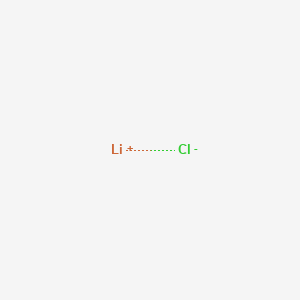Real heart-strike! Scientists use adult stem cells to repair newborn heart for the first time
January 03, 2017 Source: Singularity Network
Window._bd_share_config={ "common":{ "bdSnsKey":{ },"bdText":"","bdMini":"2","bdMiniList":false,"bdPic":"","bdStyle":" 0","bdSize":"16"},"share":{ }};with(document)0[(getElementsByTagName('head')[0]||body).appendChild(createElement('script')) .src='http://bdimg.share.baidu.com/static/api/js/share.js?v=89860593.js?cdnversion='+~(-new Date()/36e5)];On November 28, 2016, in the operating room of the University of Maryland Medical Center, a little boy, Just 4 months old, was lying on the operating table and underwent a second operation in his life. Dr. Sunjay Kaushal and Dr. Si M. Pham from the University of Maryland Medical Center in the United States injected stem cells into his heart [1], hoping to help this hypoplastic left heart syndrome (HLHS). Children are better "live".
HLHS accounts for 1.4% of congenital cardiovascular malformations. The mortality rate is very high. If the child is not treated after birth, the average survival time is only 4-5 days, and most of the 48 hours will leave the world. But even with surgery, their five-year survival rate is on average less than 60%.
Eight years ago, Dr. Kaushal began exploring the possibility of using stem cells to treat HLHS. This time, Josue was one of the first clinical trials to try to repair baby's myocardium with stem cells. The left ventricle of children with HLHS is small and cannot deliver oxygen-rich blood to the whole body. Therefore, children will develop progressive cyanosis, shortness of breath or difficulty breathing and heart failure after birth.
At present, the most commonly used treatment is to separate and merge different arterial and venous blood vessels through three stages of surgery, so that the right ventricle can bear the "work" of the two ventricles. But even if the operation is successful, the increase in the "workload" of the right ventricle can lead to serious "wear", and the final solution can only be "change of heart."
However, the scarcity of the heart source and the difficulty of surgery and postoperative rejection are not negligible, which is not a simple solution for most children. Therefore, the researchers hope to inject stem cells during bidirectional vena cava-pulmonary anastomosis (BDCPA, a common procedure for the treatment of congenital ventricular dysplasia), use stem cell differentiation to increase cardiomyocytes and make the right heart "stronger" Under the premise of no need for heart surgery, the child will have a higher survival rate and life expectancy.
Curt I. Civin, director of the Center for Stem Cell Biology and Regenerative Medicine at the University of Maryland, said that the heart of the newborn is actually a rich source of cardiac stem cells, but the HLHS children have insufficient stem cells, so they need supplements from outside sources to help them. Overcome the disease." The researchers used heterologous mesenchymal stem cells (MSCs), which are pluripotent stem cells. In adults, researchers have discovered that heterologous mesenchymal stem cells can repair heart scars, reduce inflammation, and promote small blood vessels, heart stem cells, and Cardiomyocyte growth further stimulates cardiac regeneration [2,3].
Earlier this year, Dr. Kaushal and his colleagues published a study in the American Journal of Physiology, Heart and Circulatory Physiology, an official journal of the American Physiological Society. ], they selected a pig with a similar heart structure and humans as a model, simulating the state of HLHS right ventricular overload, and injecting them with the same amount of stem cells and placebo. After 4 weeks, the results showed that the cardiomyocytes in the placebo group became larger, the electrocardiogram was abnormal, and the right ventricle showed obvious hypertrophy. At the same time, the gene detection showed that the gene expression related to hypertrophy increased significantly.
In contrast, in the MSC-treated group, the right heart function of the piglets was normal, and the expression level of the growth-differentiating factor 15 (GDF15) against hypertrophy was increased. The residual amount of MSC is very small, and the proliferation of cardiomyocytes and vascular endothelial cells is significantly increased, and new blood vessels are formed. At the same time, endogenous c-kit + cardiac stem cells are widely present in the right ventricle. c-kit + cardiac stem cells are the most abundant and proliferative stem cell types in adult myocardial tissue, and are considered to be the most promising to achieve complete myocardial regeneration. Stem cell type.
These key results suggest that MSC therapy may be a potentially effective therapy for HLHS patients. Based on this study, Dr. Kaushal also applied for a phase 1 clinical trial of 30 people (NCT02398604) [5], including Josue. The two cases that have accepted MSC injections are currently performing very well, which gives Dr. Kaushal great confidence. Although Josue's parents know that this therapy does not guarantee a perfect result, they are very happy to see the current stable situation. Josue's father has always told the doctors, "God is with us, we are all In an effort."
Currently, Dr. Kaushal's clinical trial is still recruiting volunteers. This research will continue until 2020, at which time we will really know how effective MSC therapy is. Before Josue underwent surgery, Dr. Kaushal said to Josue's father, "I know this is too stressful, but everything will be fine." I think this sentence may also be what Dr. Kaushal wants to say to himself. We also hope that this unfinished story will soon usher in a good ending.
Lithium Chloride CAS No.7447-41-8
Lithium Chloride Basic Information
Product Name: Lithium Chloride
CAS: 7447-41-8
MF: LiCl
MW: 42.39
EINECS: 231-212-3
Mol File: 7447-41-8.mol
Lithium Chloride Structure

Melting point 605 °C(lit.)
Boiling point 1382°C
density 2.06
vapor pressure 1.33 hPa (547 °C)
refractive index n20/D 1.381
Fp -4 °F
storage temp. 2-8°C
solubility H2O: soluble
form beads
color White to gray
Lithium Chloride Use
Also used for air conditioning, pyrotechnics, dry batteries and lithium metal, also used as a flux and desiccant.
Lithium Chloride,Lithium Chloride Formula,Lithium Chloride Uses,Lithium Chloride Price,Lithium Chloride Solution
Shandong YingLang Chemical Co.,Ltd , https://www.sdylhgtrade.com